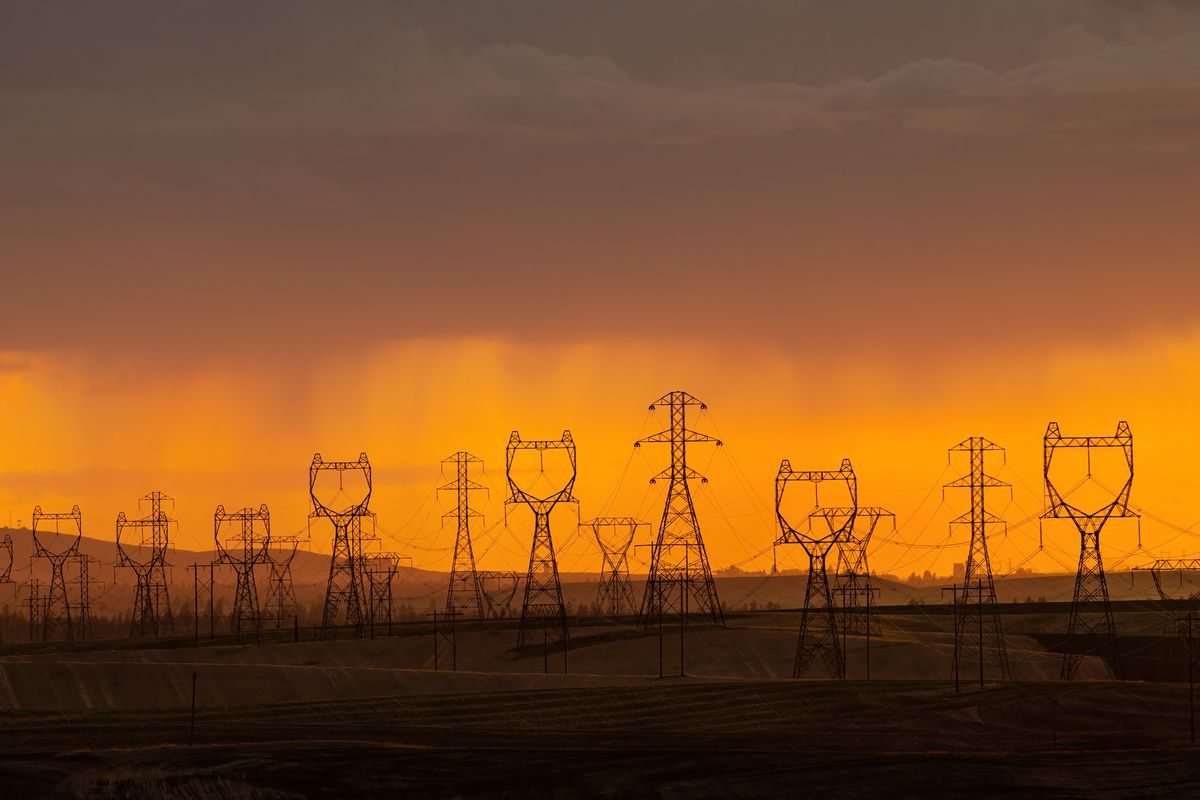Heat ri$es: How June’s heat wave has affected utility bills for Inland Northwest customers

Historically high temperatures have Inland Northwest residents feeling the heat through their wallets.
Customers with Avista Utilities, Kootenai Electric Cooperative and Inland Power and Light saw at least a 7.5% increase, on average, in their June electricity bills over last year.
The increase follows what was the hottest June on record for several communities, including Spokane and Coeur d’Alene, resulting in historically high customer loads for each of the three companies.
Avista, in particular, recorded a systemwide average electrical load of 1,470 megawatts across the month, up from 1,233 megawatts last year, according to the company.
Late June’s heat wave was a factor. With highs in the 100s over several straight days, record-high power use – compounded by system equipment issues – prompted Avista to institute rolling blackouts affecting tens of thousands of customers. Company representatives have said the load experienced June 28 would have exceeded the previous systemwide daily peak, around 2,300 megawatts, by several hundred megawatts had blackouts not occurred.
The company serves more than 400,000 meters in parts of Washington, Idaho and Oregon. In Washington alone, Avista’s residential customers saw their bills increase, on average, approximately 7.5% from last year and about 11% from 2019, according to the company.
Part of that is attributable to annual rate adjustments made “to balance the actual cost to serve customers with the rates customers pay for their electricity,” said Avista spokesman David Vowels. The company has increased electricity rates by 2.4% in the past two years, including a 2% boost last year.
“While there are rate adjustments that may have contributed to these changes in bill amounts, it can be difficult to pinpoint the exact driver given customer behavior and individual circumstances,” he said via email.
Avista’s average residential use among Washington customers similarly rose in June, up by approximately 6.2% from last year and 9.4% from 2019.
Vowels said there could be various factors for the increase, such as the number of residents and appliances, the primary cooling system and insulation. That said, Vowels indicated the company has tracked an increased use of air conditioners this year.
“Increases in usage related to cooling could also occur in July,” he said.
Inland Power’s average residential customer load in June was, on average, 20% higher than it was in 2020. By comparison, the difference in average customer load between June 2020 and 2019 was 2%.
Inland Power spokeswoman Jennifer Lutz said the increased use is attributable to the heat wave as well as year-over-year membership growth. The company serves more than 43,000 meters across parts of 13 counties in Washington and Idaho.
Accordingly, Inland Power’s average residential customer bill for June is up 14% over 2020 and 17% over 2019.
“Inland Power’s rates have not changed since April 2020,” she said in an email. “In April 2020, Inland Power had a small increase to the monthly service charge to cover operational costs and no increase to the energy rate.”
To assist with the heat, Spokane Area Neighborhood Partners (SNAP) distributed more than 100 fans through most of June and July, said spokeswoman Nicole Bishop.
“We have received calls from seniors who are afraid to use their air conditioning because of the cost,” Bishop said via email. “We have been encouraging them to use it, as we can help defer the costs through our programs.”
Bishop said SNAP may have a better idea of the heat wave’s impact on the agency’s clients in the coming weeks. While SNAP is quickly filling open appointments for the agency’s energy assistance programs, Bishop said that’s more due to COVID-19 hardships.
“For many of our clients, air conditioning is a luxury,” Bishop said, noting that SNAP’s clients earn 150% or less of the federal poverty level. “Furthermore, we are typically a once-per-season program, meaning that many clients received assistance from us at some point since October, and so they may not request to reapply since then.”
In Idaho, residential customers with the Kootenai Electric Cooperative saw, on average, an approximately 20% increase in their bills for June over last year, according to the utility. The cooperative serves more than 30,000 meters across parts of four counties.
Kootenai Electric Cooperative spokeswoman Erika Neff said the majority of that is attributable to increased customer electricity use – even with costs for purchasing power from the Bonneville Power Administration on the rise.
Though BPA power, which is produced via federal hydroelectric system on the Columbia River, “is among the cleanest and least expensive in the nation,” production and transmission costs have continued to increase, Neff said.
A cost of service study done by the Kootenai Electric Cooperative in 2020 resulted in a rate increase effective in April. For the average residential customer using 1,100 kilowatts per month, the increase has amounted to about $3.80 monthly, Neff said.
“It’s also important to know that the primary driver for anticipated rate increases over the next decade has mostly to do with the increasing cost of purchased power,” she said via email. “This is a reflection of our commitment to keep rates as low as possible without compromising our commitment to service excellence and safety.”